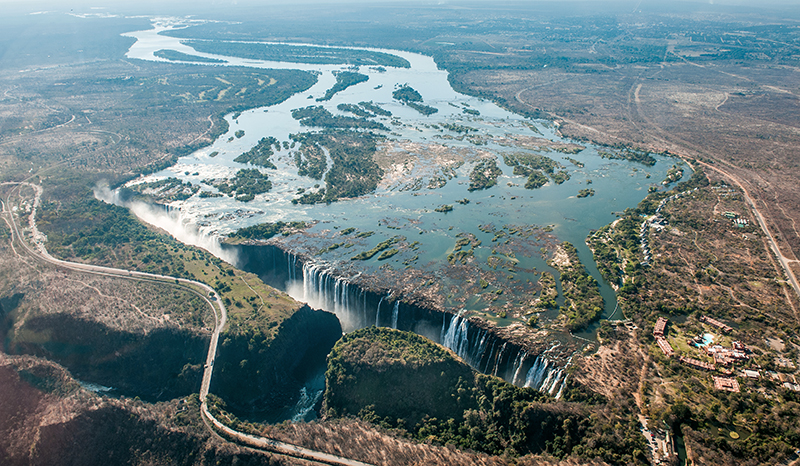Zambezi River conservation

The Zambezi River, often referred to as the “lifeline of southern Africa,” is a majestic watercourse that flows through six countries, including Angola, Zambia, Namibia, Zimbabwe, Botswana, and Mozambique. This iconic river is not only a source of life for millions of people living along its banks but also plays a vital role in conserving some of Africa’s most extraordinary wildlife and ecosystems. In this blog post, we will delve into the reasons why the Zambezi River basin is crucial for the conservation of wildlife and ecosystems.
Biodiversity Hotspot
The Zambezi River basin is renowned as a biodiversity hotspot. Its diverse landscapes, ranging from wetlands and savannahs to forests and floodplains, support an exceptional array of wildlife. This basin is home to numerous species of mammals, birds, reptiles, and fish, many of which are threatened or endangered. Iconic species such as elephants, hippos, crocodiles, and various antelope species can be found here.
Mosi-oa-Tunya: The Smoke That Thunders
The Zambezi River is famously associated with Victoria Falls, locally known as “Mosi-oa-Tunya,” meaning “The Smoke That Thunders.” This natural wonder, one of the world’s largest waterfalls, is a UNESCO World Heritage Site and a protected area. The falls and the surrounding rainforest create a microclimate that sustains unique flora and fauna.
Transboundary Conservation Areas
The Zambezi River basin encompasses several transboundary conservation areas, where countries collaborate to protect shared ecosystems. One notable example is the Kavango-Zambezi Transfrontier Conservation Area (KAZA TFCA), which is the largest terrestrial transfrontier conservation area in the world. KAZA TFCA spans five countries and aims to conserve biodiversity, promote sustainable tourism, and enhance regional cooperation.
Critical Habitat for Aquatic Life
The Zambezi River and its tributaries provide critical habitat for a diverse range of aquatic life. This includes numerous fish species, some of which are migratory. The annual fish migration in the Zambezi River is a spectacular event, attracting not only local wildlife enthusiasts but also researchers from around the world.
Supporting Local Communities
Conservation efforts in the Zambezi River basin often include initiatives to improve the livelihoods of local communities. Sustainable tourism, community-based natural resource management, and conservation-focused education programs provide economic benefits while ensuring the protection of natural resources.
Climate Regulation
The Zambezi River basin plays a crucial role in climate regulation. Its wetlands and forests act as carbon sinks, helping to mitigate climate change by absorbing and storing carbon dioxide. Moreover, the river’s flow influences local weather patterns and provides a source of water for agriculture, which is vital for food security.
Preservation of Cultural Heritage
Indigenous cultures and traditions are deeply intertwined with the Zambezi River. Conserving the river’s ecosystems is essential for preserving the cultural heritage of the people who have lived along its banks for generations.
Conclusion
The Zambezi River basin stands as a testament to the importance of protecting our planet’s natural wonders. From its rich biodiversity and iconic waterfalls to its role in climate regulation and support for local communities, the Zambezi River basin is a crucial region for wildlife and ecosystem conservation. As we recognize its significance, it becomes our responsibility to ensure that this lifeline of southern Africa remains intact for future generations to marvel at and cherish.




